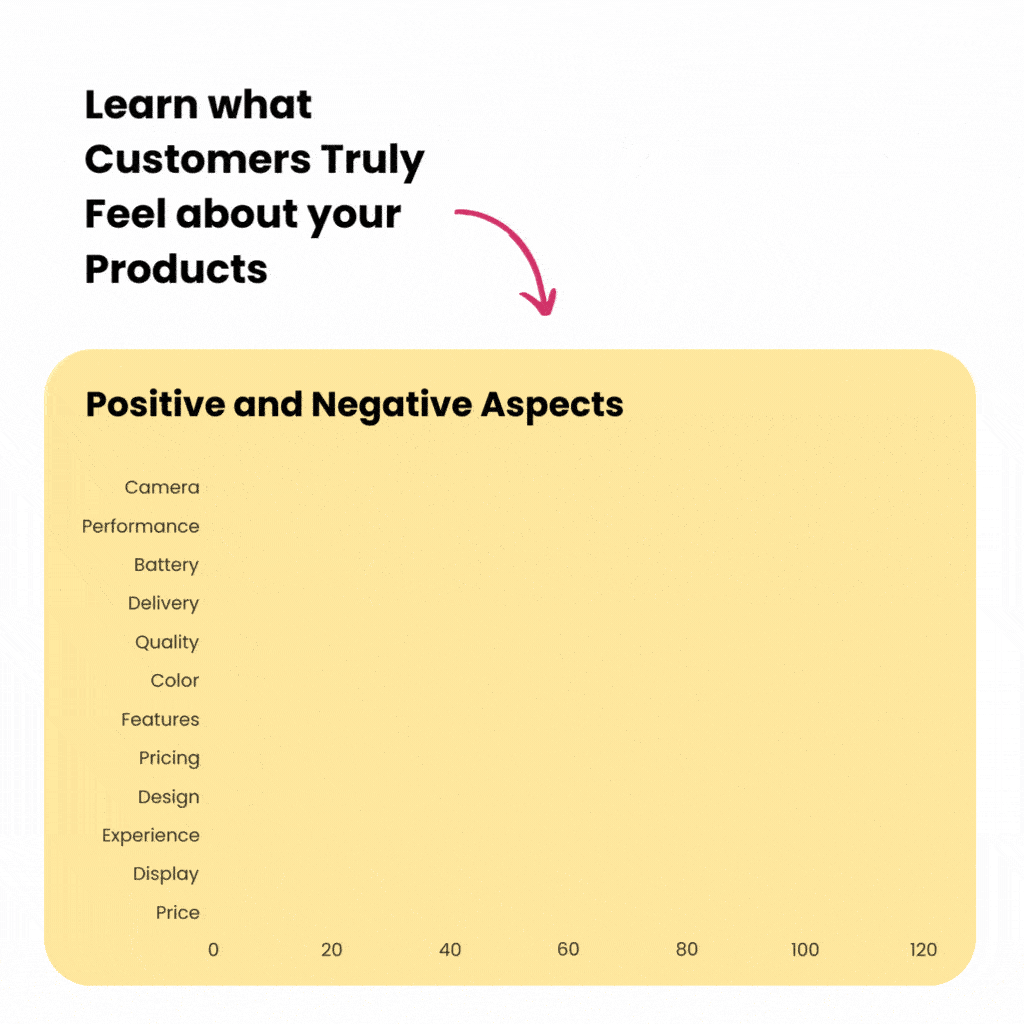What’s the benefit of scraping ecommerce website reviews? A customer slams your latest product on Amazon: “The smartwatch battery dies in 4 hours. Overpriced and useless!” Within days, similar complaints stack up. Sales plummet by 35% as competitors tout “24-hour battery life” in their ads. Meanwhile, your team is oblivious, unaware that buried in those angry reviews is the blueprint to your next breakthrough.
This isn’t hypothetical—it’s the reality for brands ignoring the goldmine of eCommerce reviews. In a world where 93% of shoppers read online reviews before purchasing, feedback isn’t just noise; it’s the raw material for innovation and the foundation of trust.
Why Scraping eCommerce Reviews is a Game-Changer for Brands?
Customer feedback analysis is no longer a luxury. By scraping data from online marketplaces like Amazon, brands decode the voice of the customer at scale, transforming unstructured rants or raves into actionable insights. Tools leveraging consumer sentiment analysis and NLP (Natural Language Processing) parse thousands of reviews in minutes, identifying trends that drive R&D and marketing strategies.

Image Source: The Good
Consider this: A kitchenware brand scraped 10,000 Amazon reviews and found 22% of negative feedback cited “non-stick coating wears off.” By reformulating their coating and highlighting “durable non-stick” in ads, they reclaimed their #1 Best Seller rank in 60 days.
How Scraping Reviews Fuels Product Development & Strategy?
1. Predict Market Shifts Before Competitors Do
Online marketplaces are real-time focus groups. Amazon scraping reveals emerging pain points and desires your team might miss.
Example: A baby gear brand noticed repeated mentions of “heavy” in stroller reviews. They launched an ultra-light model using aluminum alloys, capturing 18% market share from rivals.
Pro Tip: Combine data scraping across platforms (Walmart, eBay, niche forums) to spot cross-channel trends. A surge in “easy assembly” mentions on Reddit could signal a demand for DIY-friendly packaging.
2. Turn Negative Reviews Into Trust-Building Opportunities

Addressing complaints publicly boosts credibility. A Harvard study found products responding to reviews saw a 12% lift in conversion rates.
Case Study: When a fitness tracker brand noticed “band irritation” complaints, they used voice of customer analytics to pinpoint a latex allergy issue. They released hypoallergenic bands and updated listings with “dermatologist-tested” tags. Returns dropped by 40%.
3. Uncover Hidden Features That Resonate
Positive reviews often highlight unexpected use cases.
Example: A gardening tool brand found 15% of reviews praised their pruners for “crafting.” They launched a “DIY Craft Bundle” with instructional eBooks, tapping into a new audience and increasing AOV by $22.
Best Practices for Ethical and Sustainable Data Scraping
While scraping eCommerce websites is powerful, it requires vigilance:
- Respect robots.txt: Amazon allows scraping but blocks aggressive bots. Use throttling tools to mimic human browsing speeds.
- Prioritize APIs: Amazon’s Product Advertising API delivers structured review data without legal gray areas.
- Anonymize Data: Strip personal details to comply with GDPR/CCPA. Tools like 42Signals automate this, ensuring only product-related text is analyzed.
- The Cost of Ignoring Ethics: A luggage brand was banned from Amazon after using unauthorized bots to scrape competitor prices. Their sales vanished overnight.
Step-by-Step Guide: Transforming Scraped Data into Innovation
1. Collect Data Strategically
- Automate with Tools: Platforms like 42Signals scrape Amazon, Etsy, and Shopify reviews into dashboards, filtering spam and fake reviews.
- Expand Beyond Marketplaces: Scrape niche forums (e.g., Sephora’s Beauty Board for skincare) using Python libraries like Beautiful Soup.
2. Clean and Categorize
- Filter Noise: Remove off-topic reviews (“Delivery was late”) if focusing on product issues.
- Tag Themes: NLP tags feedback into categories (e.g., “battery life,” “customer service”) for trend analysis.
3. Analyze Sentiment and Context

Image Source: Zealous
- Quantify Emotions: Tools like MonkeyLearn score sentiment from -1 (negative) to 1 (positive). A surge in negative scores around “screen glare” could prompt anti-glare coatings.
- Cross-Reference Metrics: Compare review sentiment with sales data. If “poor mic quality” reviews spike alongside a 20% returns increase, prioritize audio upgrades.
4. Prototype and Validate
- Rapid Testing: Use 3D printing to create sample products addressing top complaints. A headphone brand tested 5 ear tip designs based on “uncomfortable fit” reviews in 3 weeks.
- Pre-Launch Surveys: Share prototypes with loyal customers from review databases, offering discounts for feedback.
5. Launch and Monitor
- Update Listings: Inject review-derived keywords. A backpack brand added “waterproof zippers” to titles after scraping revealed it was a key buyer motive.
- Track Impact: Monitor real-time reviews post-launch. A 50% drop in “defective” mentions signals success.
Best Tools for Scraping and Analyzing eCommerce Reviews
- 42Signals: Scrapes global marketplaces, analyzes sentiment, and flags emerging issues. AI-driven technology analyzes millions of product reviews to provide a detailed understanding of positive and negative sentiments. This allows you to make data-driven improvements to your product, elevating customer satisfaction and engagement.
42Signals also provides –
- Customer emotion tracking: Gain a deep understanding of what your customers truly feel about your products.
- Trend identification: Stay ahead of market shifts by tracking real-time changes in customer sentiment across platforms.
- Capacity to Improve CX: Address common pain points and enhance satisfaction.
- Drive product innovation: Use real-time insights to develop products that resonate with customers.

- PromptCloud: Ethical scraping services that scout websites, have flexible data collection frequency, customizable data points being extracted, and data delivery mechanisms based on specific requirements.
- ReviewMeta: Detects fake Amazon reviews skewing your analysis.
- Lexalytics: Advanced NLP for emotion detection (e.g., frustration vs. disappointment).
Case Study: How Scraping Revived a Dying Electronics Brand
A speaker manufacturer was drowning in “static noise” reviews on Amazon. Using 42Signals, they:
- Scraped 8,000 reviews, finding 32% cited audio issues.
- Discovered a faulty capacitor via lab tests.
- Relaunched with “CrystalSound Technology” and a video demoing lab fixes.
- Responded to every negative review with a replacement offer.
Result: 4.8-star average within 90 days, with 45% of complainers revising their ratings.
How Transparent Review Insights Strengthen Brand Trust?
Share how feedback shapes products:
- Add “Based on Your Feedback” sections to product pages.
- Post behind-the-scenes videos of R&D teams solving reported issues.
A pet food brand reduced “my dog hates this” reviews by 60% after launching a “Taste Test Guarantee” and showcasing customer-inspired flavor tweaks.
Conclusion
The brands winning today treat reviews as a live pulse—not a post-mortem. By ethically scraping eCommerce data and pairing it with consumer sentiment analytics, you’re not just fixing flaws; you’re building products that markets crave and communities trust.
Ready to Harness Your Reviews?

Schedule a demo to automate scraping, decode customer voices, and turn feedback into your R&D compass.





